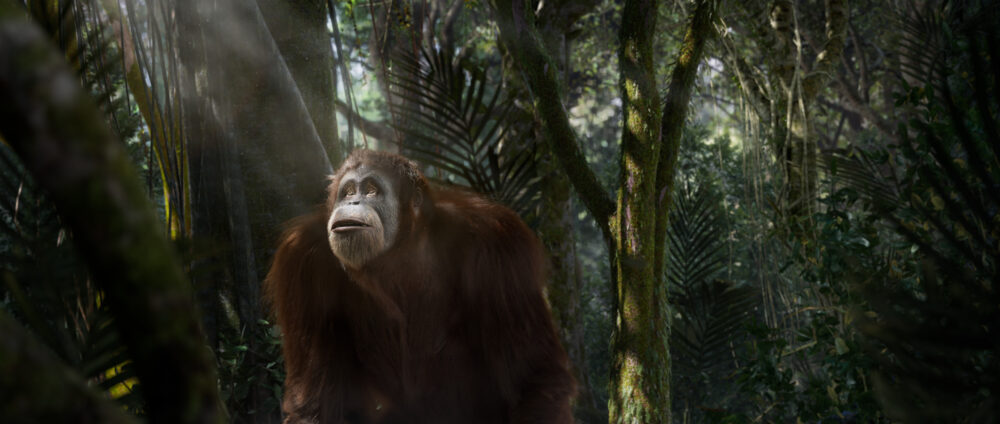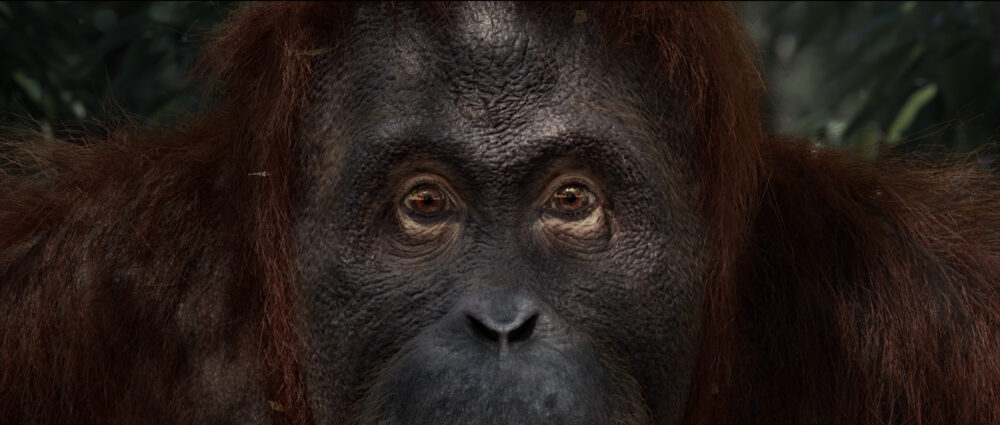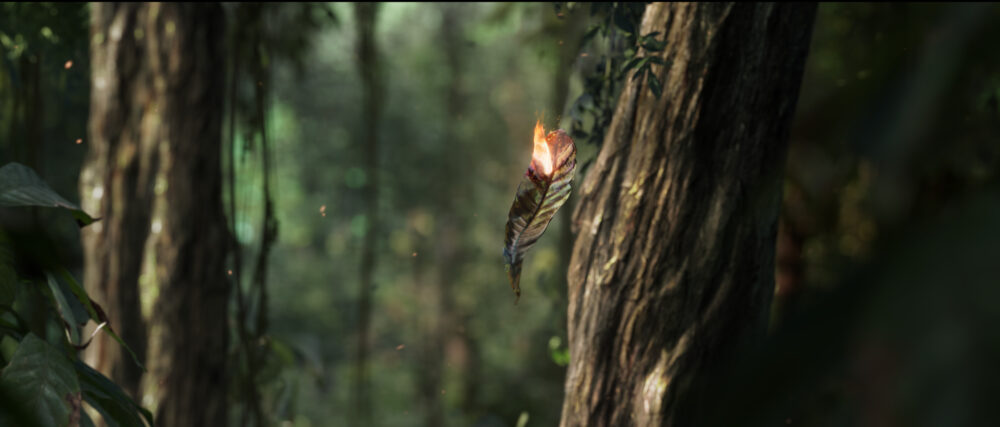This year’s winner of the Visual Effects Society (VES) Student Award, presented once again by Autodesk during the 20th annual VES Awards, uses richly detailed CGI to take viewers into the dense forest and tell the backstory of a real-life orangutan impacted by the climate crisis. Crafted by a skilled student team from ARTFX Montpellier, Green draws inspiration from documentary filmmaking and delivers an emotional impact through photoreal character and environment design.
“The film was conceived as a tribute to Green, an orangutan from the jungles of Indonesia and the subject of a documentary by French filmmaker Patrick Rouxel,” said director Camille Poiriez. “We were touched by the documentary and wanted to tell the backstory of Green by creating an animated short about one of the major crises of our time: the loss of biodiversity, driven by deforestation and the larger climate emergency. We strived to emulate a documentary style for the film, with photoreal visuals that immersed the viewer into the story and made them confront the reality of the crisis at hand.”

For the hero character, Green, character artist Eloïse Thibaut analyzed orangutan references to create a fully realized 3D sculpture with lifelike texturing and photoreal fur. To bring the sculpt to life, Poiriez explains, “We considered using motion capture, but due to complexities with finding actors and managing technical aspects, we opted to animate by hand. Our animator worked with video references and footage he shot of an orangutan at a zoo in Paris to help capture the essence of Green, including precise details like the facial expressions.”
The filmmaking team created two opposing environments to underline the film’s message. “First, we sought to idealize the lush green forest with breathtaking luminosity and vibrant colors. It was a big challenge to make it look real and dynamic to draw viewers into the world of Green, using soft lighting and warm colors to express an upbeat mood. To help bring the forest to life, we incorporated different elements, like 3D animation meshed with real footage of plants,” explained Poiriez. “The second half of the movie reflects a more dark and frightening tone, with grayscale colors and fire. This combined with the direct eye contact from Green packs an emotional punch, making viewers reflect on what might happen next.”

The production made use of a range of digital content creation tools, including Autodesk’s Maya for rigging and animation, a combination of Maya and Houdini for layout, and Nuke for compositing. Everything was then rendered in Arnold, which the director points out “was the best and most capable solution for handling the level of detail in Green’s skin texture and the resolution of her fur.”
The project’s core team consisted of five students, with additional artists enlisted to help lighten the workload with rigging and texturing the environments. From the initial concepting phases through final delivery, the film took approximately one-and-a-half years to complete.

“The biggest challenge was expressing the film’s message to make audiences contemplate climate change and its impact on animals, like Green,” said Poiriez. “We achieved this by making the film as photoreal as possible by using many references for the environment, lighting and character, and then further emphasized Green’s final look towards the camera as the film’s pinnacle moment.”
Passionate about digital arts from a young age, recent graduate Poiriez points out Avatar as one of her biggest inspirations in filmmaking. She is now working as a digital compositor at Paris studio One of Us.
Learn more about Green at ARTFX’s website here.










 Win a Funko X Lilo & Stitch Prize Pack!
Win a Funko X Lilo & Stitch Prize Pack! 


